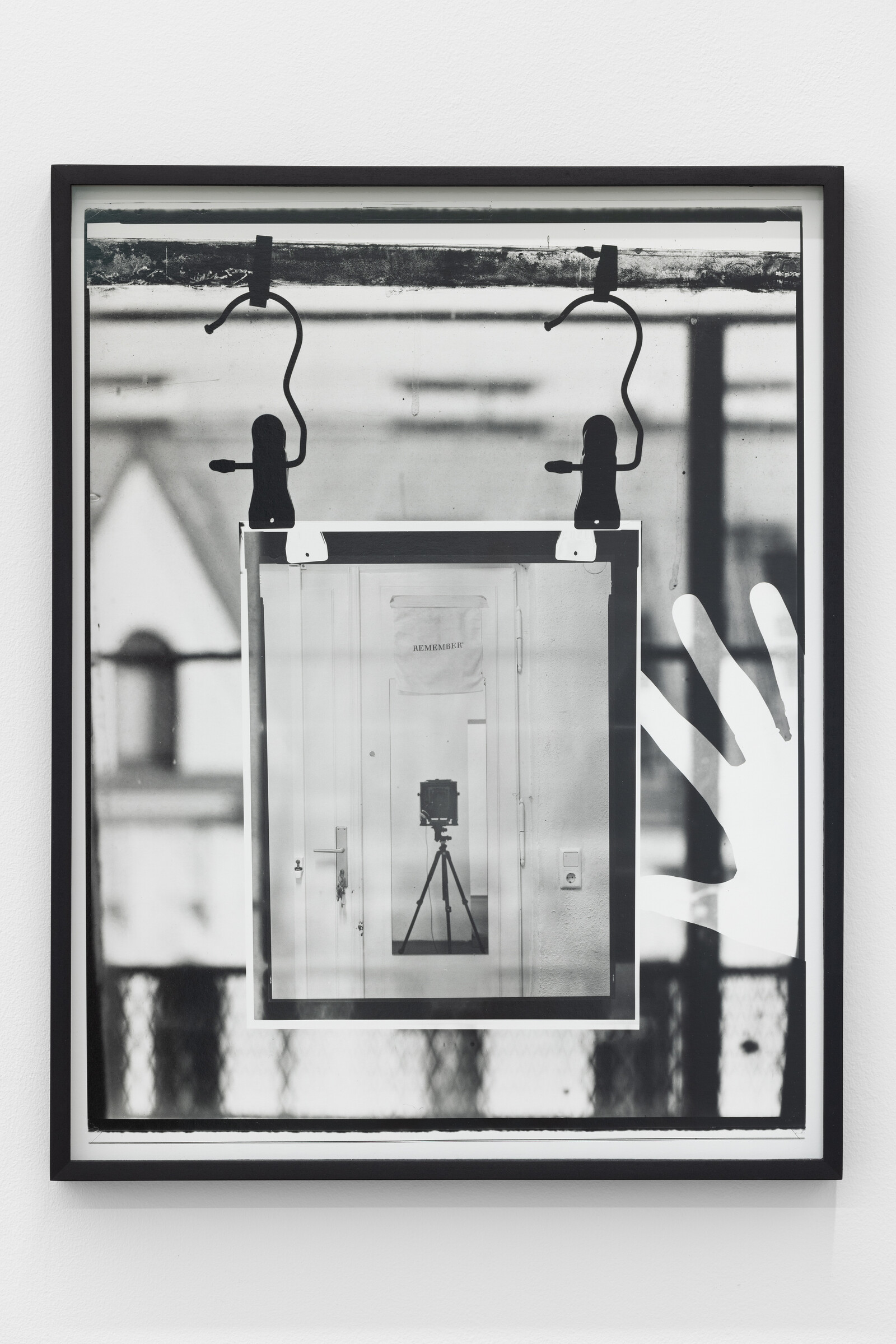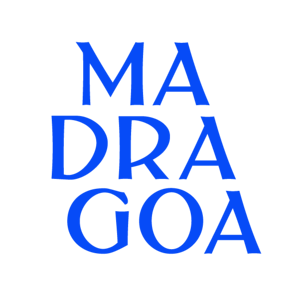Working Title
November 25, 2022–January 14, 2023
Rua dos Navegantes 53A
1200-730 Lisbon Lisboa
Portugal
Hours: Tuesday–Saturday 11am–7pm
T +351 961 190 165
info@galeriamadragoa.pt
“To reproduce oneself is to disappear and even the most basic asexualized being is rarefied by reproduction. Those who reproduce themselves do not die if, by death, we understand the passage from life to decomposition, but he who was, by reproducing himself, ceases to be what he was—because he doubles himself.”[1]
Sophie Thun’s work is an autobiographical stream of images. It is a visual collection of places and spaces in which the artist has worked, photographed and exhibited. As author of her images, she is a constant presence: She stages herself gazing assuredly into the camera, represents herself by means of her photographic equipment, or presses her body directly onto the photo paper. At each step of the creative process, the artist has control over her image, and subsequently over her subjectivity and the depiction of (female) self-representation.
Thun utilises a variety of photographic techniques, including fragmentation and reproduction. By multiplying, dissecting and breaking down the claim of one “natural” status quo, she explores the idea of the self as an amalgamation of “selves”, depicting identity as a process, as changeable. The exhibition Sophie Thun: Working Title provides an insight into the artist’s photographic experiments on the representation of the self, between multiplication and dissolution.
The multiplication of space
In this exhibition, the spaces of Madragoa have also been encoded into Thun’s work: a spatial intervention was developed, incorporating two works referring directly to the exhibition venue. In the centre of the gallery space, the artist confronts visitors with a life-size colour print of the office behind, suspended from the ceiling. The image’s complex composition is reminiscent of an enfilade, with a sequence of architectural and mirrored rooms and Thun’s silhouette visible as a reflection behind her large-format camera. The artist always photographs in analogue and almost every print, whether life-size or in the format of a negative, is unique. In the exhibition, she places the large-format photo paper in front of the room itself like a curtain to highlight the artifice of photography as a two-dimensional imitation.
Similarly, she installs the second on-location work in front of the window overlooking the street it depicts. The framed black-and-white print shows the window with a sheet of paper inside it. In front, Thun has placed her film holder, light meter and loupe. Inspired by the depiction of materiality in trompe l’oeil painting, the artist initiates her experiments in illusion and imitation with a focus on matter. While a canvas is painted with a brush and paint, in this instance the photo paper imitates the texture of the real paper. For Thun, who also studied painting, this gesture is less a defence of photography against other forms of art as it is an allusion to the fertile proximity of the problems and questions expressed in many of her works.
The window motif appears in another work, albeit in a different form, as an image within an image. A four-by-five-inch negative is seen hanging from bulldog clips in the window of the artist’s Vienna studio. The camera features once again, framed by a door with a mirror attached to it. Her hand, imprinted in white, enters the image from the right, gripping under the negative while simultaneously being intersected by the window leading. The insertion, overlapping and interweaving of images and image spaces is a recurring principle in Thun’s work: On the one hand, she makes reference to the many, largely invisible, production processes, which she condenses visually onto the surface of the image. On the other, she refers to the snapshot quality of the (photographic) image which, like a window, only limits our view of the world and can never capture it in its entirety. In this way, she questions our habit of reading photography as a reflection of reality.
The multiplication of the self
In the After Hours series, with the duplication of Thun’s self-portraits, the use of multiplication becomes even more complex. The title of this ongoing series of works refers to the circumstances of their creation. Thun takes the photographs in hotel rooms after working as a camera and lab technician for other (male) photographers or in her own exhibitions. The black-and-white prints show the artist in a variety of poses, always naked and always holding the shutter release in her hand. Prior to exposure, Thun usually makes a diagonal cut through the negatives and mounts them in a way that produces a doubling effect via rearrangement and physical displacement. The scenes show references to the art history of the female nude, as well as a closeness to pornographic images, created by splitting the body and arranging the fragments to form motifs with sexual connotations.
From outside, the artist’s hands once again extend inside the image as multiple white silhouettes, as if to fix the collage in place. Thun produces this effect in the darkroom by pressing her body onto the photo paper so that no light reaches that area, producing a photogram. In so doing, she inscribes her physical presence into the work while simultaneously drawing attention to the body’s absence.
Like the view through a kaleidoscope, Thun’s images consist of multiple fragments which detach from one another over and over to take a new form. She creates her works using methods which disrupt pictorial logic and dissolve its coherency for the observer. At the same time, the artist creates an awareness of the author’s multiple roles, which she assumes in the process of creating the images as photographer, model, processor and technician. Dissolution can also be observed in the duplication of the self.
Marijana Schneider, 2022 (translated by Jessica West).
[1] Georges Bataille, Literature and Evil (Penguin, 2012), page 69.














